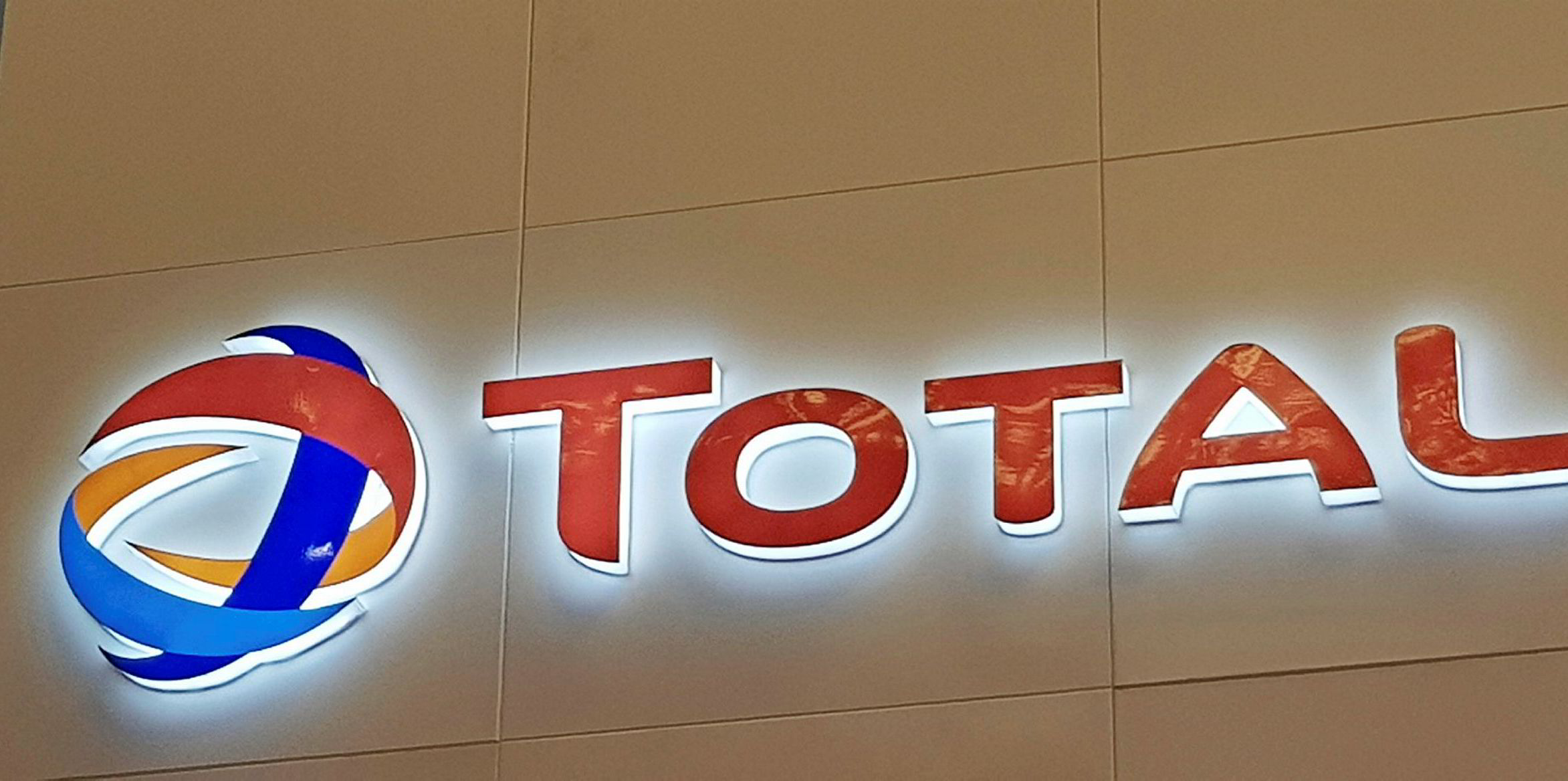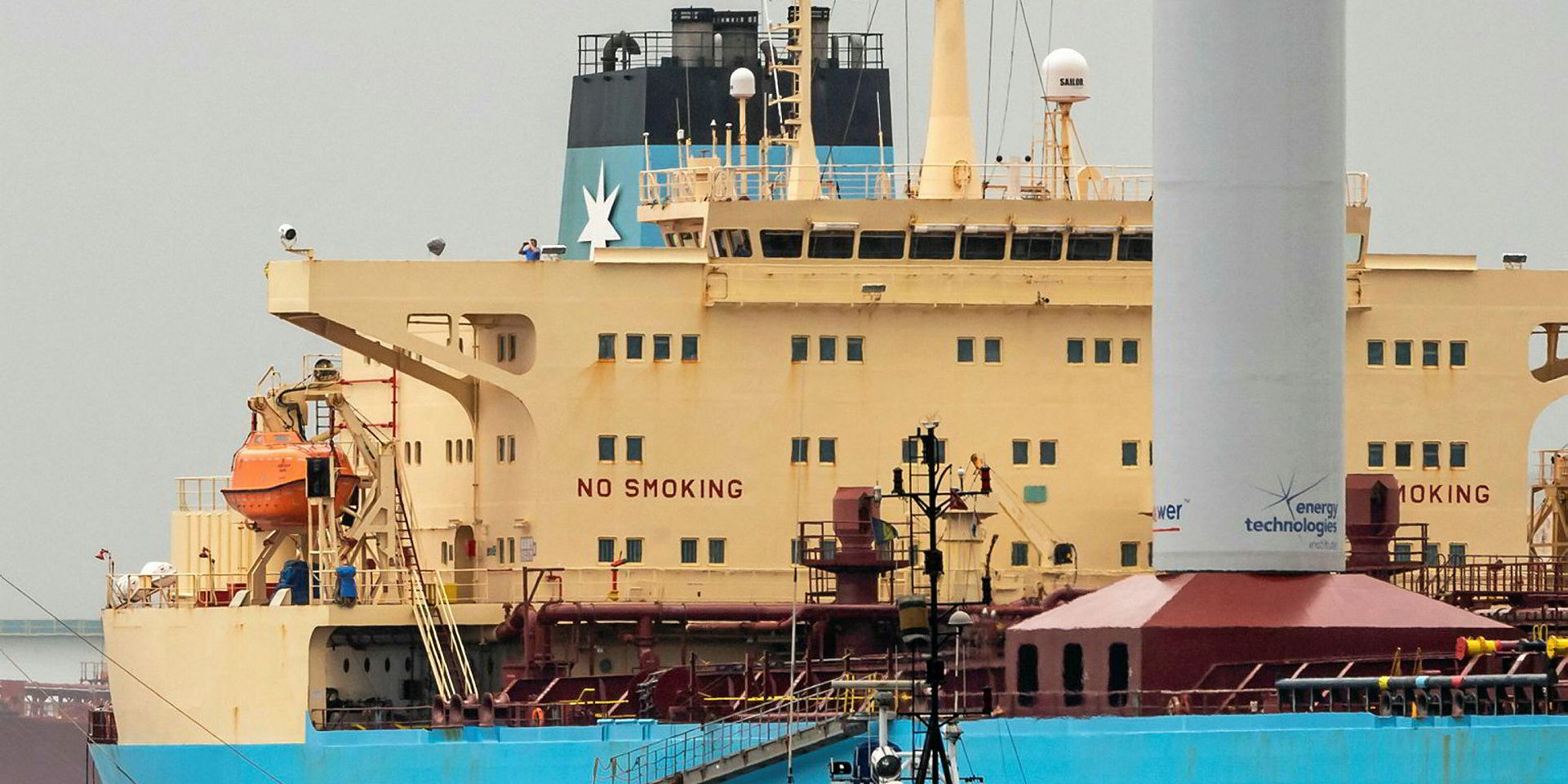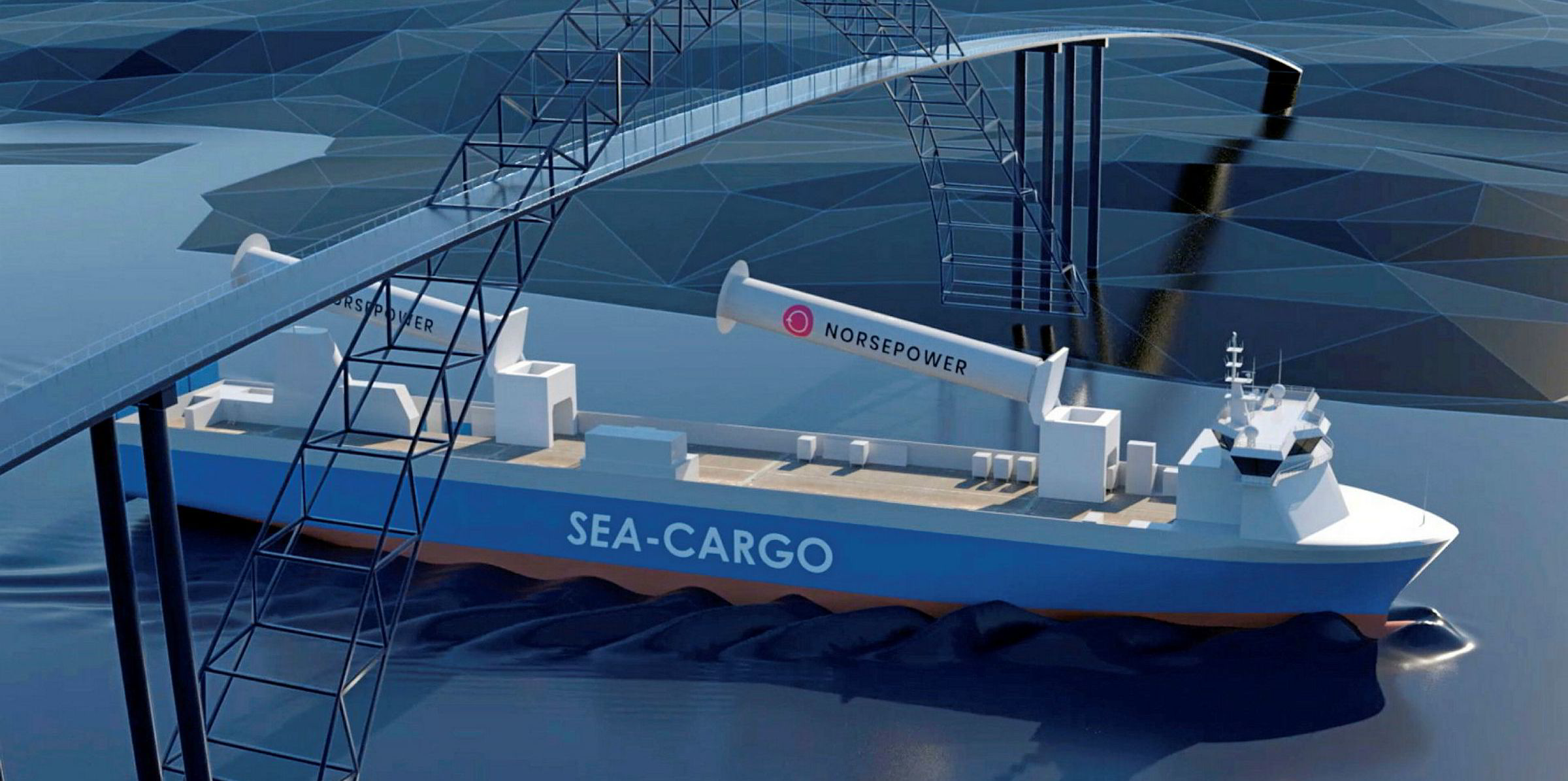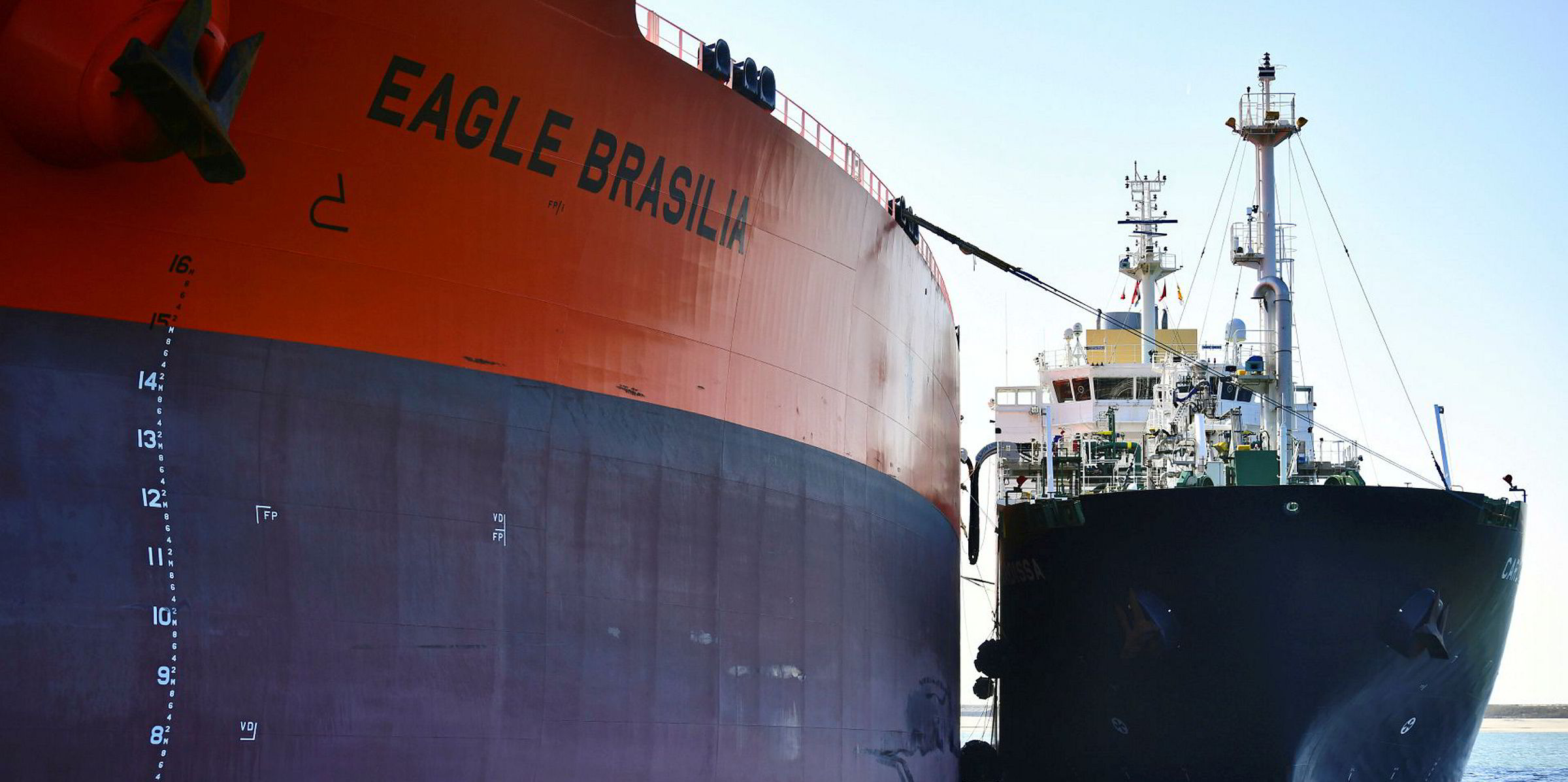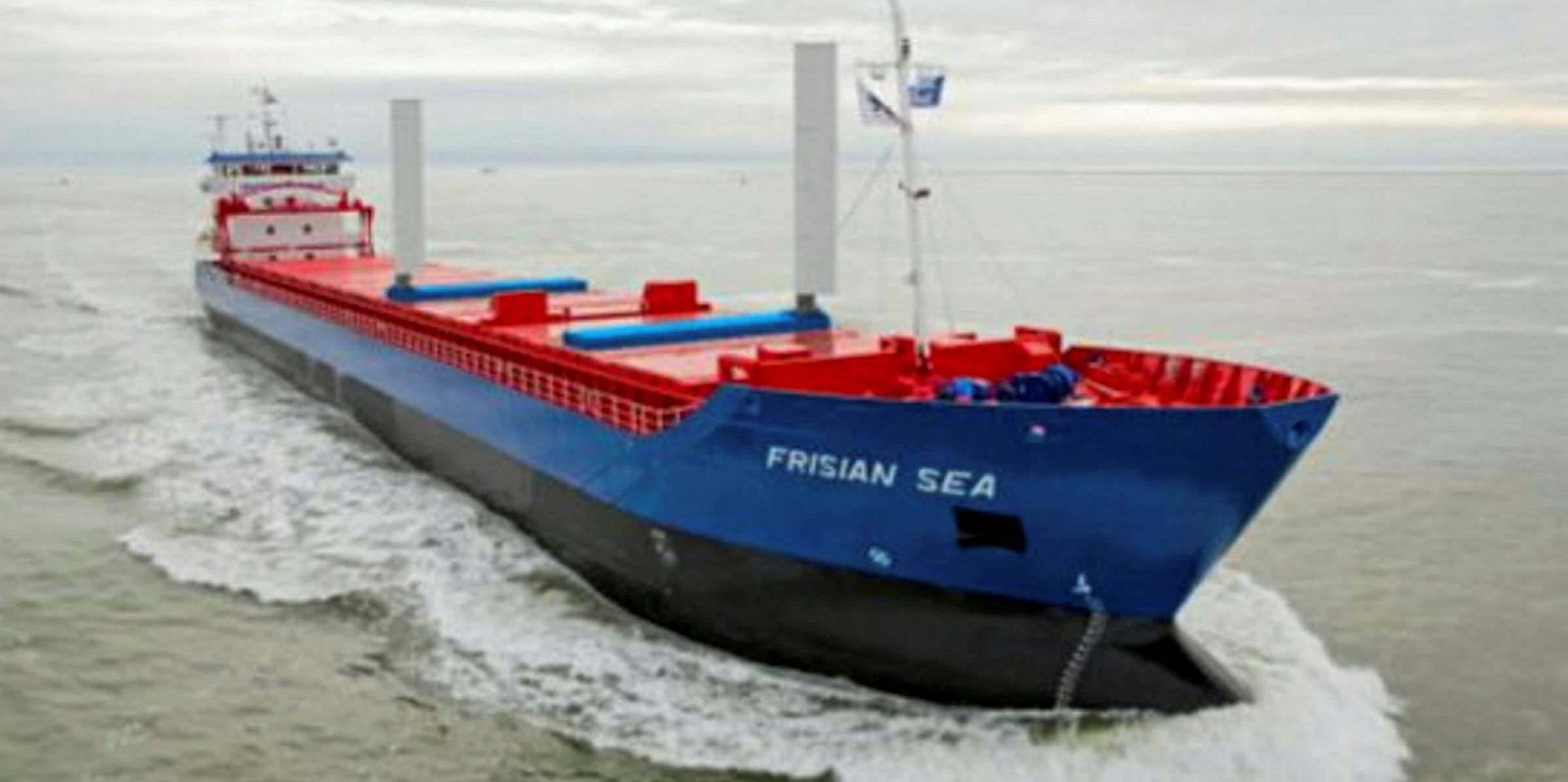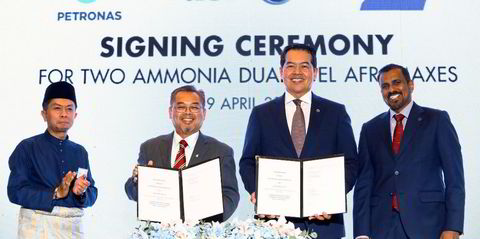Energy major Total is mulling wind propulsion for its next generation of LNG carrier newbuildings as it looks at how to make commercial and environmental savings in its shipping operations.
Total has been conducting a thorough review with independent aerodynamic experts in order to be ready to include the best solutions in its newbuilding specifications. This may include wind tunnel tests, Total senior project manager Frederic Deybach told a shipping session at the Gastech Virtual Summit.
Deybach, who is also an LNG innovation officer with the company, described four different wind-assisted ship propulsion designs (WASP) and said that in “best voyage” conditions these could provide fuel savings of between 30% to 50%.
The major, which has committed to reducing its emissions to zero by 2050, is starting by looking at the use of WASP solutions for LNG carriers as they are generally deployed on longer charters, which helps mitigate the risk to investment for owners.

Deybach said Total is aiming at newbuildings as it has an increasing portfolio of LNG and a growing fleet and it is easier to incorporate this into a design from day one.
But he said retrofittings are also an option that the company would look at, as these are relatively simple to achieve and have limited impact on a vessel’s structure.
He added that the company is ready to implement any WASP solution that would be proposed on any of its ships.
Deybach revealed that Total has been working with South Korea’s big three shipbuilders Hyundai Heavy Industries, DSME and Samsung Heavy Industries to look at the savings that can be made from hull drag reduction, machinery optimisation and wind assisted-ship propulsion assistance.
Slower speeds
Naval architect Deybach said that Total has been looking at its own shipping portfolio and found that speeds over 17.5 knots were hardly run anymore, with the average speed for laden voyages now at around 16 knots and 13 knots for ballast legs.
“We are clearly far from the 19 knots design speed,” he said, “and this is the reason why the hull shape should not be optimised anymore for 19 knots but for the lower speeds that are now used by our LNG carriers".
He said this could stack up at 3% in savings over the speed profile.
Air lubrication or bubbles under the hull could allow a 4% to 5% savings he said, and with a shaft generator may produce up to 7%.
On machinery optimisation, he said much has already been done in the switch from steam turbine through to the medium-speed and slow-speed diesel engines.
There is now a need to consider efficiency and energy consumption but also CO2 and methane emissions.
“Methane slip is now something we have to consider very seriously in all the evolutions,” he said.
He estimates that another 8% could be saved on the machinery side.
More to be done
“But this isn’t much, we need to do more,” he said.
“Auxiliary power is clearly the next step," he added, with the use of wind as an assistance to the propulsion
He listed four examples – the Kite, the articulated wing — where he said the design would see six units fitted on an LNG carrier, Flettner rotors and the suction wing – both of which would use 30-metre versions of their technologies for LNG carriers.
Deybach said the fuel savings expected for above-deck solutions on the best routes could be over 10%.
For above-ship models this could rise to over 20%.
While for some of the best voyages where wind conditions are optimal this could be in savings of 30% to 50%.
The figures could be further improved with routing optimisation, in which software proposes a route that optimises the wind assistance.
But he cautioned that to get the full gains there is a need to rethink the “rewards and blame issue” that exists between charterers who benefit from any savings, shipowners who bear the investment cost and the vessels' captains who decide on the use of the system during a voyage.
